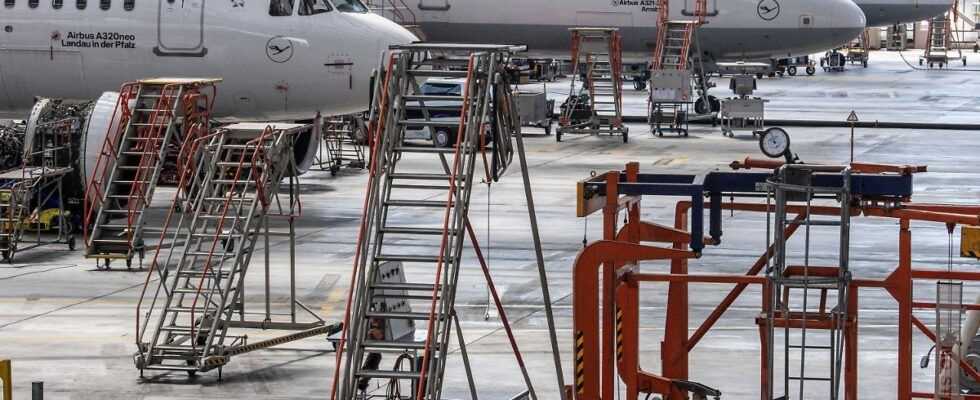Airplanes don't get any better from standing around. Among other things, the Lufthansa Group has to make considerable efforts to keep the expensive jets operational at all times. But by no means all are still needed after the corona pandemic.
Aircraft mechanic Katrin Storeck pulls out the flashlight. On the outer skin of the Airbus A340, she also looks in the hidden corners for possible adhesive residues of the film with which the engines were covered. After a month of inactivity, the Lufthansa jet should fly to Miami in a few hours. That means a lot of work for Storeck and her colleagues in Frankfurt long-distance maintenance.
In the Corona crisis, international air traffic almost came to a standstill: a large proportion of the approximately 25,000 active passenger jets worldwide were on the ground. Ongoing travel restrictions in the pandemic that has not yet been overcome and the onset of an economic recession are holding back the airlines' restart. The flight plan is created only a short time in advance, so that a complicated puzzle arises as to which plane should be used on which flight. With almost every jet, Lufthansa is also faced with the alternative of flying, mothballing or almost ready to fly.
At the bottom of the crisis, 700 of the 763 jets were on the ground; in the autumn, 380 planes and about half of the fleet should be back in the air, CEO Carsten Spohr announced. He also assumes that a new normal dimension will not be reached until 2023, with 100 aircraft less than in 2019. Since the partially nationalized group also wants to buy 80 brand-new aircraft during this time, almost one in four of the current fleet will be sold Aircraft will no longer be used in the future.
A jet can be parked for a maximum of 30 days
(Photo: AP)
From a technical point of view, planes have to fly regularly, says maintenance manager Dirk Ranft. Passenger jets can be parked for a maximum of 30 days. Even in this condition, the engines are already covered to keep birds, insects or objects away from the turbines. Individual systems such as the speedometer are removed and the tires rolled a bit every few days to avoid damage to the stand.
Lufthansa reactivates the parked aircraft in regular waves. Since the aircraft have to fly at least every 30 days according to the manufacturer's specifications, the jets are then put back into regular service. The alternative would be so-called workshop flights without passengers. "We don't make flights around the Henninger Turm," says Ranft. Instead, the jets required for operation are replaced regularly and supplemented when there is an increased need.
Gigantic aircraft warehouses in the deserts
However, a larger part of the fleet will be withdrawn from service for longer downtimes, including the entire fleet of the Airbus A380. Seven of the world's largest passenger aircraft are on the company's own premises in Frankfurt, the remaining seven in the hot and dry climate of Teruel, Spain. Six giant birds will no longer return to the Lufthansa scheduled service, but will be returned to the manufacturer Airbus. The four-engine with its 519 seats fits into the time just as little as the Boeing 747, of which Lufthansa wants to retire at least five.
They burn more kerosene per passenger than their successors with two engines and are difficult to fill to a cost-covering level even on the racetracks of the world. While the parked jets can be made afloat within a working day, reviving a plane from deep sleep takes up to four weeks at a significantly higher cost. Here, further subsystems have been removed, tail units and landing gear completely lubricated. In the meantime, maintenance intervals that have failed can extend the span until the restart. In Teruel, but also in the deserts of the United States and Australia, gigantic open-air aircraft warehouses were created. For many jets, they will become cemeteries.
. (tagsToTranslate) economy (t) corona crisis (t) pandemics (t) Lufthansa
